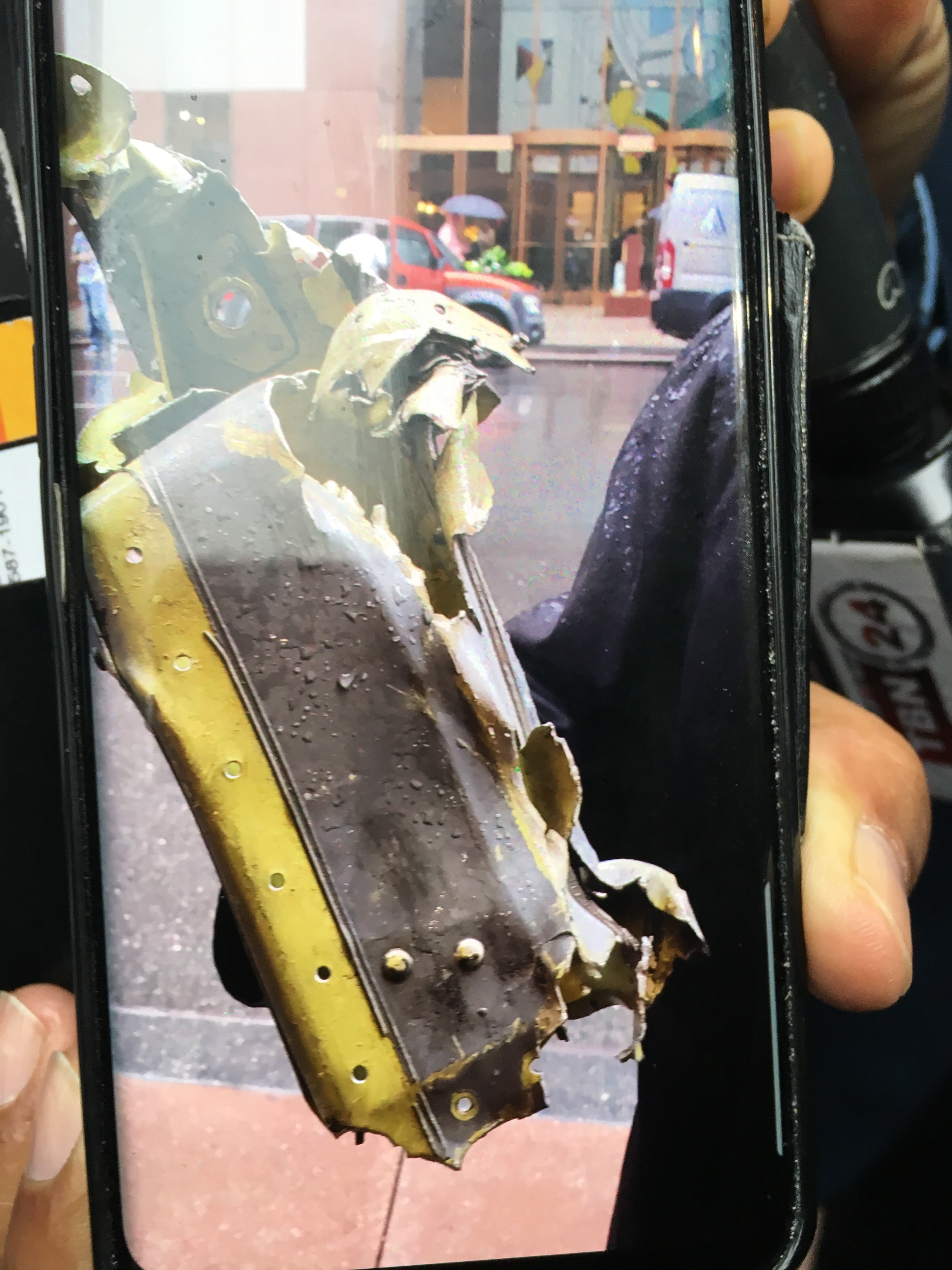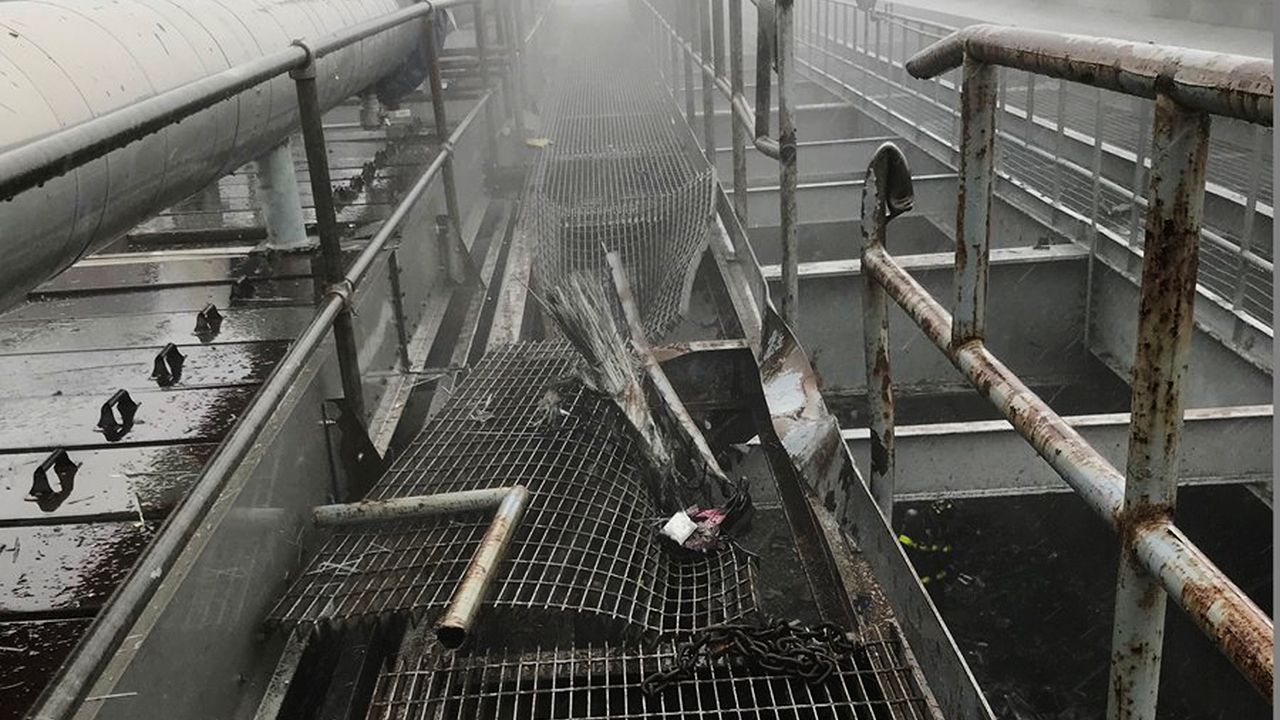The pilot killed Monday when his helicopter slammed into the roof of a New York City skyscraper was not authorized to fly in limited visibility, according to his pilot certification, raising questions about why he took off in fog and steady rain.
FAA: PILOT WAS ONLY CERTIFIED TO FLY IN GOOD WEATHER
Tim McCormack, 58, was only certified to fly under regulations known as visual flight rules, which require generally good weather and clear conditions, according to the Federal Aviation Administration (FAA).
The rules require at least 3 miles of visibility and that the sky is clear of clouds for daytime flights. The visibility at the time of Monday's crash was about 1¼ miles at nearby Central Park, with low clouds blanketing the skyline.
McCormack was not certified to use instruments to help fly through cloudy or bad weather, the FAA said.
The crash in the tightly controlled airspace of midtown Manhattan shook the 750-foot AXA Equitable building, obliterated the Agusta A109E helicopter, sparked a fire, and forced office workers to flee.
Authorities said there is no indication the crash was deliberate.
A CRASH AFTER A PASSENGER TRIP
At a National Transportation Safety Board (NTSB) briefing Tuesday, air safety investigator Doug Brazy said that McCormack had arrived at a heliport on New York City's East River after a trip carrying one passenger from nearby Westchester County.

(Pilot Tim McCormack. Photo courtesy of the East Clinton Volunteer Fire Department.)
The passenger told investigators there was nothing out of the ordinary about the 15-minute flight, Brazy said.
McCormack waited at the heliport for about two hours and reviewed the weather before taking off on what was supposed to be a trip to helicopter's home airport in Linden, New Jersey, Brazy said.
That trip would have taken the helicopter south, over the city's harbor and past the Statue of Liberty.
Investigators were reviewing video posted on social media Monday afternoon showing a helicopter that investigators believe is the doomed chopper pausing and hovering a short distance south of the heliport, then turning and making an erratic flight back north through rain and clouds.
The helicopter hit the Manhattan tower about 11 minutes after taking off, in an area where flights aren't supposed to take place.
A flight restriction in effect since President Donald Trump took office prohibits aircraft from flying below 3,000 feet within a 1-mile radius of Trump Tower, only a few blocks from the crash site.
Helicopters going in and out of the heliport, on East 34th Street, are only allowed to fly in the restricted area if they have permission and are in constant communication with air traffic control.
Brazy said the pilot never made such a request and didn't contact air traffic control, although investigators were trying to verify reports that McCormack had made radio calls to someone just before the crash. Brazy said McCormack's planned route to Linden wouldn't have required him to contact air traffic control.
NTSB officials said they did not believe the pilot knew he was traveling in the restricted airspace, because he was not sure of his precise location.
Asked if the weather may have played a factor, Brazy said "it is certainly one of the most interesting concerns we have."
"Should the helicopter have been flying? I do not know yet," he said.
Brazy said the helicopter was not equipped with a flight data recorder or a cockpit voice recorder.
The building the helicopter crashed onto was not equipped with a helipad, according to New York Rep. Carolyn Maloney.
The city currently allows helicopters to take off and land from three heliports, one each on the east and west sides and downtown Manhattan. All border rivers.
Officials on Tuesday started conducting interviews with witnesses and employees at the 34th Street heliport.
It will take the NTSB 18 to 24 months to conduct a full investigation, but more information is expected when the agency releases its preliminary report within the next two weeks.
LOW VISIBILITY
It's not clear if weather played into the crash. Clouds obscured the roof of the building around 2 p.m. Monday and heavy fog was present in the area since late-morning.
According to Maloney, news helicopters were told the cloud ceiling of 900 feet was too low to fly. Visibility at the time of the crash was less than 1 mile because of the heavy fog.
It was once more common for helicopters to take off from private Manhattan rooftops, the most famous of which was on what was then the Pan Am Building (now called the MetLife Building). In 1977, four people waiting on the roof were killed when a helicopter toppled over and a rotor blade broke off and hit them. A fifth person, a pedestrian, was killed by falling debris. That spurred a push to close down private helipads.
Several New York lawmakers, including Maloney, are calling for a ban on helicopter flights over Manhattan.
Trump tweeted from Washington that he had been briefed on the crash. Cuomo's office said the president and governor had spoken.
WHO IS THE PILOT?
McCormack was a former fire chief in upstate Clinton Corners, New York. With 15 years of experience flying helicopters and single-engine airplanes, he was certified as a flight instructor last year, according to FAA records.
The East Clinton Volunteer Fire Department posted on Facebook that McCormack's "technical knowledge and ability to command an emergency were exceptional."
Linden Airport Director Paul Dudley described McCormack as "a highly seasoned" and "very well regarded" pilot.
McCormack chronicled some of his helicopter flights on his Facebook page, including a 2014 emergency landing caused by a bird strike. He had been conducting a sightseeing tour over Manhattan when the bird penetrated the windshield of his Bell BHT 407, causing McCormack to land unexpectedly at the West 30th Street Heliport.
"It was pretty much like an explosion going off in your cockpit," McCormack told television station WABC at the time.
THE CLEANUP
Brazy said a salvage crew expected to start removing the wreckage from the roof by Tuesday evening, possibly by taking pieces down the stairs and elevator. It will be moved to a secure location for further examination, he said. The wreckage from the crash is highly fragmented.
"The location — within the city and on top of the roof of a building — is probably the biggest challenge in the investigation," Brazy said.
WITNESSES: WE FELT THE BUILDING SHAKE
The building is named the AXA Equitable Center. Tenants include hedge fund and finance-related groups. AXA Equitable said the building is only named after it because it was previously a tenant when the building was first built.
People who were in the building said they felt the building shake from the impact. Some witnesses said it took them about 30 minutes to evacuate the building. People in nearby buildings were also evacuated.
The building was still off-limits to tenants Monday night. Officials initially said the crash didn't cause structural damage to the building, but the FDNY later determined it had caused structural damage to the top of the building. FDNY officials said they didn't think that would prevent building occupants from returning within 48 hours. The city buildings department is investigating when they can return.
Nicholas Estevez told NY1 that a piece of the helicopter fell in front of his vehicle on the street.

(A piece of the helicopter that fell in front of a car on the street, according to a witness. Ruschell Boone/NY1.
Pedro Rodriguez, a pastry line cook at Le Bernardin, a well-known restaurant in the building, said workers got an announcement telling everyone to exit, and he later heard from people around him that there was a fire on the roof. The evacuation wasn't chaotic, Rodriguez said, but he was rattled because he immediately thought of the September 11 attacks.
"It's scary when something like this happens," he said.
Alex Jacobs was working on the seventh floor when he heard bells and an announcement to evacuate. He and his colleagues — who hadn't heard or felt an impact — used stairs to a fire exit. "It's really unfortunate. I just hope everyone's OK," he said.
NO INJURES TO PEOPLE INSIDE THE BUILDING
New York Gov. Andrew Cuomo, whose office is nearby, called into NY1 on Monday and said there were no reported injuries to people inside the building. There were no reported injuries to anyone on the ground, officials said.
A two-alarm fire on the roof, caused by the crash, was extinguished in less than an hour. The FDNY had to use a special hose to put out the fire, and also had to mitigate fuel leaking from the helicopter.
RECENT HELICOPTER CRASHES
New York City has a history of both minor and major helicopter wrecks and crash landings.
Last month, a helicopter crash landed in the Hudson River near a busy Manhattan heliport. The pilot escaped mostly unscathed.
Five people died when a sightseeing helicopter crashed into the East River last year. Three people died in another crash into the same river in 2011. Nine people died in a collision between a sightseeing helicopter and a small plane in 2009, not far from the scene of Monday's mishap.
In 2006, New York Yankees pitcher Corey Lidle's single-engine plane slammed into the 20th floor of a building on Manhattan's Upper East Side, killing Lidle and his flight instructor. It was not clear which one was piloting the plane.
The National Transportation Safety Board concluded the pilot misjudged a narrow U-turn before veering into the building.
------
Information from the Associated Press was used in this report.



